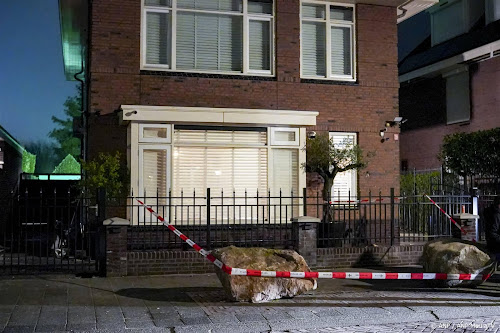Current Trends In Nuclear Litigation: A Detailed Analysis

Table of Contents
Increased Focus on Decommissioning Liability
Decommissioning nuclear power plants is a protracted and expensive process, presenting significant legal challenges. The rising costs, often exceeding initial estimates, create friction between plant operators, regulatory bodies, and ratepayers. Disputes frequently center around financial responsibility and the allocation of long-term liabilities. For example, the protracted legal battles surrounding the decommissioning of the San Onofre Nuclear Generating Station highlight the complexities involved in determining liability for unforeseen costs and delays. Key aspects of this growing area of nuclear litigation include:
- Cost Allocation: Disputes over the equitable distribution of decommissioning costs among stakeholders, including plant operators, government agencies, and ratepayers.
- Insurance Coverage: Challenges in securing adequate liability insurance to cover the potentially enormous costs and long-term risks associated with decommissioning. Many existing policies may not fully address the evolving needs of this complex process.
- Regulatory Compliance: Legal challenges arising from disagreements over regulatory requirements and interpretations regarding decommissioning procedures and environmental remediation.
Growing Concerns Regarding Nuclear Waste Disposal
The safe and permanent disposal of nuclear waste presents a formidable legal and logistical hurdle. Litigation in this area often stems from the environmental impact assessments and public opposition to proposed storage sites. The lack of a permanent disposal solution in many countries has led to ongoing legal battles concerning temporary storage facilities, transportation routes, and the long-term risks associated with radioactive waste. Consider the ongoing legal challenges faced in the US regarding the Yucca Mountain repository project as a prime example. This area of nuclear litigation is characterized by:
- Site Selection Disputes: Legal challenges to the selection of proposed geological repositories, frequently driven by environmental concerns and public opposition.
- Transportation Regulations: Legal battles surrounding the transportation of nuclear waste, encompassing safety regulations, routing decisions, and public safety concerns.
- Environmental Impact Assessments: Legal challenges to the adequacy and accuracy of environmental impact assessments for waste disposal projects.
The Evolving Landscape of Nuclear Accident Liability
Legal frameworks governing liability in the event of a nuclear accident are complex and often vary significantly between countries. These frameworks often involve the interplay of international conventions, national laws, and industry-specific regulations. The Chernobyl and Fukushima Daiichi disasters serve as stark reminders of the potential for catastrophic consequences and the complexities of assigning liability in such scenarios. Key legal considerations include:
- Liability Limits: The debate surrounding the adequacy of liability limits and the potential for exceeding insurance coverage in major accidents.
- International Conventions: The interpretation and application of international conventions, such as the Paris Convention on Third Party Liability in the Field of Nuclear Energy, in transboundary accidents.
- Compensation Schemes: The establishment and operation of government-backed compensation schemes for victims of nuclear accidents.
The Role of Emerging Technologies and their Legal Implications
The advent of advanced nuclear technologies, such as small modular reactors (SMRs) and advanced fuel cycles, introduces a new set of legal challenges. Existing regulatory frameworks may not be fully equipped to address the unique aspects of these technologies, leading to regulatory uncertainty and potential legal disputes. This area of nuclear litigation involves:
- Regulatory Approvals: The complexities of securing regulatory approvals for new reactor designs and fuel cycles, often involving lengthy and contested processes.
- Technology Licensing: Legal disputes surrounding intellectual property rights and technology licensing agreements for advanced nuclear technologies.
- Liability for New Technologies: The need to adapt existing liability frameworks to account for the specific risks and potential liabilities associated with novel technologies.
Conclusion: Navigating the Complexities of Nuclear Litigation
The current trends in nuclear litigation reveal a field characterized by complex issues, substantial financial stakes, and evolving regulatory landscapes. From the escalating costs of decommissioning to the ongoing challenges of nuclear waste disposal and the legal implications of emerging technologies, nuclear litigation demands a nuanced understanding. All stakeholders – government agencies, nuclear operators, insurers, and affected communities – must stay informed about these evolving legal trends to effectively manage risks and navigate the complexities of this critical sector. Continued research, engagement with legal experts, and participation in industry discussions are crucial to effectively address the challenges posed by nuclear litigation and ensure the safe and responsible development of nuclear energy.

Featured Posts
-
 Rm 36 45 Juta Bantuan Asnaf Disalurkan Tabung Baitulmal Sarawak Sehingga Mac 2025
May 01, 2025
Rm 36 45 Juta Bantuan Asnaf Disalurkan Tabung Baitulmal Sarawak Sehingga Mac 2025
May 01, 2025 -
 Kshmyr Ke Msyle Pr Brtanwy Wzyr Aezm Kw Thryry Drkhwast
May 01, 2025
Kshmyr Ke Msyle Pr Brtanwy Wzyr Aezm Kw Thryry Drkhwast
May 01, 2025 -
 Kampen Eist Recht Op Stroomnetaansluiting Kort Geding Tegen Enexis
May 01, 2025
Kampen Eist Recht Op Stroomnetaansluiting Kort Geding Tegen Enexis
May 01, 2025 -
 Enexis En Kampen In Juridisch Conflict Probleem Met Stroomnetaansluiting
May 01, 2025
Enexis En Kampen In Juridisch Conflict Probleem Met Stroomnetaansluiting
May 01, 2025 -
 Rugby World Cup Dupont Leads France To Victory Against Italy
May 01, 2025
Rugby World Cup Dupont Leads France To Victory Against Italy
May 01, 2025
Latest Posts
-
 Dallas Star Dies The End Of An Era For 80s Soap Operas
May 01, 2025
Dallas Star Dies The End Of An Era For 80s Soap Operas
May 01, 2025 -
 The Death Of A Dallas And 80s Soap Star
May 01, 2025
The Death Of A Dallas And 80s Soap Star
May 01, 2025 -
 A Dallas Legend And 80s Soap Star Is Dead
May 01, 2025
A Dallas Legend And 80s Soap Star Is Dead
May 01, 2025 -
 Tv Icon From Dallas And 80s Soaps Passes Away
May 01, 2025
Tv Icon From Dallas And 80s Soaps Passes Away
May 01, 2025 -
 Dallas And 80s Soap Opera The Passing Of A Beloved Star
May 01, 2025
Dallas And 80s Soap Opera The Passing Of A Beloved Star
May 01, 2025
